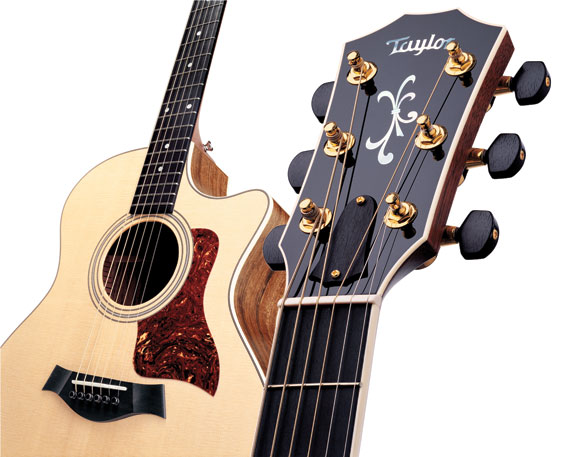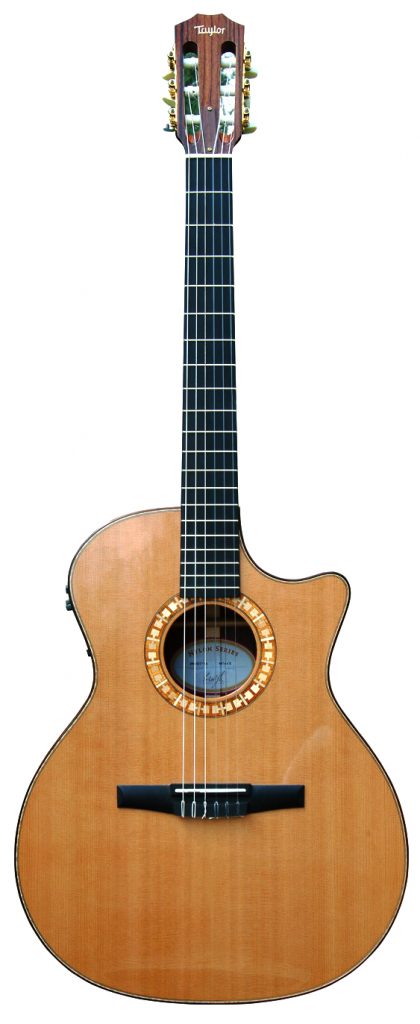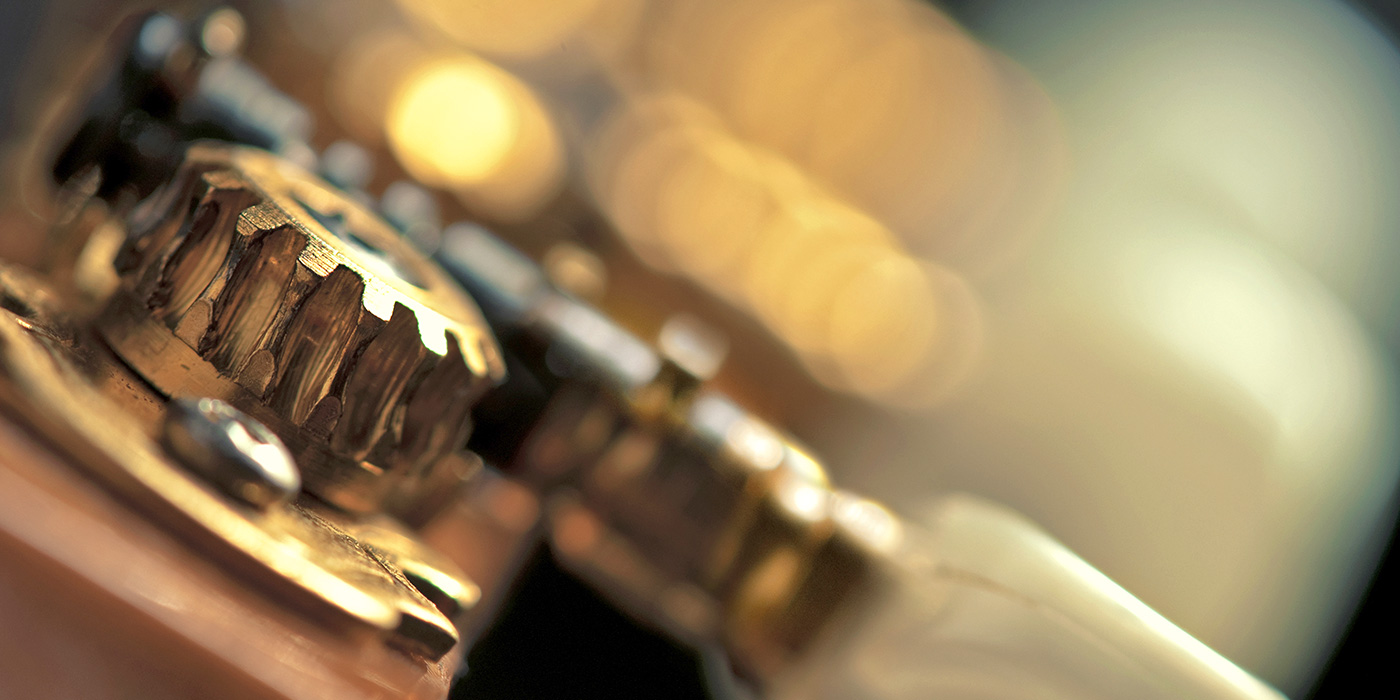A look at the various types of acoustic guitars and how to record them
By Paul Vnuk Jr.
In this age of sample-based production not every recordist knows how to record an acoustic guitar. But sooner or later one will show up at your studio. With this article we hope to arm you with just enough info to become dangerous, interested, and prepared when an acoustic guitar comes in the studio door.
How they make noise
If you‘ve ever stretched a rubber band between two fingers and plucked it, you know the basics of how a guitar works—the vibrating rubber band makes a very faint sound that varies in pitch as you vary the tension. On an acoustic guitar the strings are stretched over the length of the body, and it’s that body’s resonances that amplify the sound to the quite considerable volume you can expect from a good instrument (even before you begin to use electronics to amplify it further).
On Mics & Miking
 To create the required tension, the strings are anchored by tuning pegs on one end (which determine tension), and a bridge on the other. The strings need to be suspended away from the body so that they may vibrate freely; for that to happen, the strings rest on an elevated strip of plastic, metal or bone on the bridge known as the saddle. When a string is plucked, the vibrations are transmitted through the saddle to the top surface of the guitar that’s also known as the soundboard. The soundboard in turn causes the entire body of the guitar to vibrate, which builds up considerable sound.
To create the required tension, the strings are anchored by tuning pegs on one end (which determine tension), and a bridge on the other. The strings need to be suspended away from the body so that they may vibrate freely; for that to happen, the strings rest on an elevated strip of plastic, metal or bone on the bridge known as the saddle. When a string is plucked, the vibrations are transmitted through the saddle to the top surface of the guitar that’s also known as the soundboard. The soundboard in turn causes the entire body of the guitar to vibrate, which builds up considerable sound.
We hear body resonances from most any angle around the guitar, but most of this sound builds up inside the hollow guitar body and escapes through the usually round opening in the center of the guitar called—you guessed it—the soundhole. Shapes vary, but most acoustic guitars have elegant hourglass curves with a narrow midriff (these midriff indents are called bouts), and many have a cutaway near the joint of the body and neck that allows for easier fingering access to the highest notes. The shape of the soundhole also varies, for reasons of sound control and aesthetics. Let’s look at the types of acoustic guitars that you’re most likely to see, and pair up some good starting techniques for miking with each one.
The Dreadnaught
The most typical acoustic body style is the Dreadnaught. This is your basic hourglass-shaped acoustic guitar with strings made from steel, an average body depth of about 5″, body length around 20″ and width of 16″. They have steel-reinforced necks with dark-wood fingerboards with an average of 20 frets, and the strings fit though the bridge into the guitar body and are held in place by small, grooved pegs (usually plastic). For miking a dreadnaught, a good place to start is with the most common technique of one small-diaphragm (pencil) condenser placed at a distance of about 6″, slightly off axis of the 12th fret, and one large-diaphragm condenser (”LDC”) placed directly in front of the sound hole anywhere from 6″ to 18″ away. By adjusting the pencil condenser’s angle and fret positioning and by changing the distance of the large-diaphragm from the soundhole, you should be able to find a sweet spot which best captures the guitar’s tone.
The Jumbo: The largest member of the species is known affectionately as the Jumbo—these guitars usually have wider body dimensions than the Dreadnaught and may be deeper as well. These tend to be louder with a big, boomy thick tone. Since these instruments tend to have an extended low end and thickness to their sound, using a single large-diaphragm mic at a 1–3′ distance from the sound hole is often a good choice. This allows you to capture the full body of the instrument, and the distance helps to roll off, or lessen, low-mid and bass frequencies which can muddy a mix. Jumbos are a great choice when the acoustic is the featured instrument in a song. Using an evenly spaced pair of omni-patterned pencil condensers or a stereo XY pattern can yield very full and satisfying results, especially if you have access to a nice room with hard-wood floors. If you do not, consider placing a nice-sized sheet of plywood under the guitarist. This may sound strange but it works great for adding life to the tone and mix.
The Concert: In between the Dreadnaught and Jumbo are the Concert or Festival (name depends on the company) series of guitars. These usually have the abovementioned cutaway and a body that combines a Dreadnaught top half with a Jumbo-sized bottom. They are usually slightly thinner and often fitted with electronic pickups. These guitars are very popular for live performance, with a sound that leans toward the fullness of a Jumbo, but with the focus and control of a Dreadnaught. Since these guitars are popular for the live use, they are often the first and sometimes only acoustic guitar a player may purchase. In other words, you may see quite a few. Capturing these guitars “acoustically” is similar in approach to working with a Dreadnaught, but due to their thinner bodies they tend to have a more mid-range/nasal tone. Here it is essential to try different mic distances and placements to find the right sound of the instrument. To compensate and capture a bigger tone, get the LDC as close as you can to the sound hole (without getting hit), and angle it slightly down towards the soundhole’s edge and the body of the guitar. This will help emphasize tone, fullness and body resonance.
The Parlor: Moving in the opposite direction in size from the larger guitars, about 1/3 smaller than a Dreadnaught, is the Parlor Guitar. In the days before TV and radio, families would often retire to the parlor where songs and merriment would commence, hence the name. Most pre ‘50s acoustics tend to be of this variety, with a boxier and brighter sound that is easily blended into most full rock mixes. Although these guitars are smaller with less presence and volume, they can be the most fun to record and offer a variety of sounds. For rhythm tracks, use of a single dynamic microphone (yes, dynamic), about 2″ out of the soundhole, can really bring out a punch, which blends easily within a mix and can closely assimilate electric tracks. If a delicate ethereal guitar track is called for, a pair of omni mics placed on separate stands about 3′ to 4′ apart and 6″–1′ away can be great. Start with the guitar in the center of the recording field, and adjust the angles and distances of the microphones until the stereo image sounds balanced. If you want a wider/exaggerated stereo image, substitute a pair of hypercardioid mics instead. By using a single ribbon mic, placed closer to the body than the soundhole, you can achieve a vintage blues/mountain music sound, reminiscent of the ’20s to ’40s.
 The Classical
The Classical
The Classical guitar is an entire family in itself. Strung with nylon strings that are tied to the bridge above the body, they also have wider, flatter (non-reinforced) necks and fingerboards. They are close in size to a parlor guitar, and their sound is much more mellow and warm in tone. They are typically played with the fingers, while the folk guitars are more commonly picked. Usually these guitars are solo instruments or part of small ensembles. Since they are on the quiet side, get your microphones as close to the instrument as possible. By again starting with the “dreadnaught setup” but substituting a matching pencil condenser for the large-diaphragm mic, you should be able to maximize your gain settings, focus the sound and highlight the sound of the fingers on the strings, which is often an integral part of a classical guitarist’s performance.
Electrifying!
The Acoustic/Electric is the last example of acoustic guitars to be discussed. Although electronic pickups are most common in the “Festival/Concert” models, they can come as an option on any size, shape and style of acoustic (including classicals). They can even be attached to non-electric models as an add-on. Acoustic guitar pickups come in two flavors: magnetic (just like on an electric guitar) and piezoelectric (“piezo”), essentially a small contact microphone. Magnetic pickups are the most common, while piezo pickups are often reserved for classical models, where the strings are nylon and magnetic pickups would be useless. It is worth noting that some higher-end guitars feature both, with an option to blend the two.
Acoustic/electric guitars are awesome for plugging into an amp or soundboard for live use. For studio recording…not so much! A common mistake made by beginning engineers is to record an Ac/El with just the direct out from the pickup. While this may be fine for putting down a quick demo, the sound is less than desirable for full-fledged recording. Blending the electric sound with live mics can be great as an effect or a layer, but typically direct recording of acoustic pickups is thin, tonally inadequate and contains excessive string noise. Having said that, if you must record an acoustic guitar this way (perhaps live or for isolation), consider using a high-quality preamp or direct box vs. going straight into the mixing board. Some companies even make specific acoustic DI boxes (e.g. the BOSS AD-5) with EQ, body emulation, chorus and filtering which sound quite realistic—kind of like “reality” modeling for acoustic guitars.
Bowlbacks
You may also see a unique breed of acoustic/electric guitars with rounded synthetic bowls instead of a wood back and sides. These guitars by manufacturers Ovation and Applause gained popularity during the beginning of the MTV “Unplugged” era. With these guitars, you can throw out everything written above. While many of them sound great “plugged in” and live, they can prove difficult for acoustic studio recording. Their focus is not as an acoustic instrument. As evidence of this, many of the higher-end Ovations feature small, offset soundholes or even none at all. Their sound is often thin with little or no resonance.
Of course every company makes guitars with their own dimensions, both bigger and smaller than those listed above, but these should give you a starting reference.
Wood, bronze, nylon and dental floss
Materials, construction and string choice also play an important factor in the sound of an acoustic guitar. While acoustics come in a variety of woods, these are often a matter of tonal and cosmetics taste; what is worth noting is the two types of soundboards (or tops) of acoustic guitars. Solid woods are expensive, so cheaper “beginner” acoustics are often made with laminate tops (read plywood). They may or may not sound good enough to record well—solid-top models are obviously more desirable. How can you tell? Follow the grain of the wood to the sound hole; if the grain is visible down into the hole, the top is solid, if it has been painted, obscured or looks like flakes of pepper, it is plywood.
String choice is another factor to be noted. Most folk-style guitars use different types of bronze-wound steel for the thicker strings and unwound steel for the lighter strings. Like wire, strings come in different gauges (thicknesses)—typically the thicker the gauge, the louder and more focused the sound will be. Thicker strings are harder to play and bend. Thinner strings are quieter, but can yield a softer, less intense strumming tone. Classical guitars use nylon-core strings, which simulate early strings that were made of animal gut. These strings are quiet, warmer and sound more elastic than steel strings. Another, more recent type of string comes coated with a thin layer of plastic (the same material as dental floss) which facilitates smoother finger movement and can prolong string life. Bronze-wound strings have an intentional brightness to their tone. Stringing an acoustic with steel-wound strings meant for an electric guitar is not advisable, and will sound quite dead.
Subjective non-factors
Does price matter? There are $300 guitars that can sound great and $1000 guitars that can sound not so great. Does it matter where the guitar was made? Not really, don’t let country of origin bias you towards quality. Every factory, everywhere, has its good days and its bad days. Does brand name matter? Most companies makes a variety of models in a wide choice of price points and qualities, so it’s difficult to lump all the output of a manufacturer together.
What this means to you
This is by no means an exhaustive list of acoustic guitar styles, materials and sizes—there are of course baby guitars, acoustic/electric guitars, carbon fiber guitars, plastic coated guitars, vintage archtop guitars, and more. But knowing about the models we described in this and in last month’s column should allow you to be better prepared for your next acoustic session. A great rule of thumb: for smaller guitars and more intimate sound, use close-miking techniques; for larger guitars and louder/bigger sound, lean toward distant miking. Start here and adjust for tone, taste and mix, and most of all—have fun.


